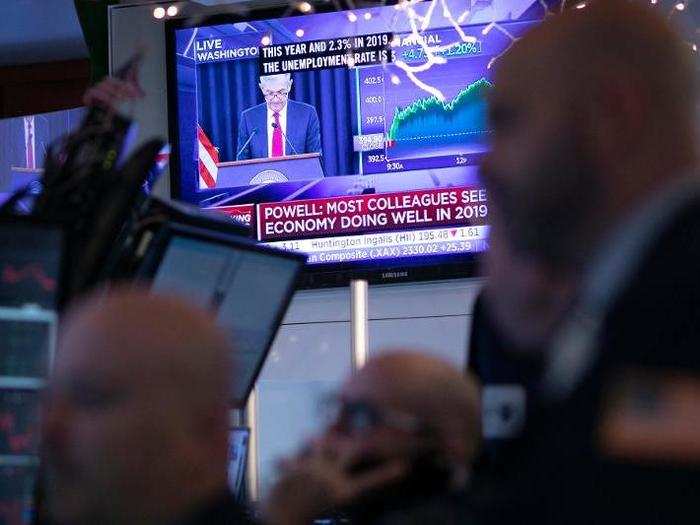
Stocks have recovered after booking their worst year since the financial crisis. But another sell-off in financial markets, heightened volatility, or another instance of an inverted yield curve could raise concerns again.
"In this case, the Fed would cut until markets have been supported and the stress has been removed from the system," Bank of America Merrill Lynch analysts said in a research note. "The Fed would be unlikely to bring rates to the zero-lower bound and could actually resume hikes after some time."

Inflation has held below the Federal Reserve’s inflation target of 2%, a stubborn point for central bankers, but remains solid enough. If it were to fall further, however, officials could eventually cut to underscore a commitment to higher inflation.
"If [Fed Chair Jerome Powell] is really serious about low inflation being ‘one of the major challenges of our time’ – either as an economic issue or a political fig leaf – then yes the Fed could cut rates to support inflation,” said Josh Wright, chief economist at iCIMS.

While growth is expected to slow in the coming months, the Federal Reserve has reiterated that the overall outlook remains solid. A return to strong hiring growth in March has further assuaged fears that a downturn is imminent.
"For the Fed to cut rates, growth would have to be pinned below the economy's potential or financial market conditions would have be to tightening significantly," said Ryan Sweet, an economist at Moody's Analytics.
 Some Tesla factory workers realized they were laid off when security scanned their badges and sent them back on shuttles, sources say
Some Tesla factory workers realized they were laid off when security scanned their badges and sent them back on shuttles, sources say I tutor the children of some of Dubai's richest people. One of them paid me $3,000 to do his homework.
I tutor the children of some of Dubai's richest people. One of them paid me $3,000 to do his homework. India not benefiting from democratic dividend; young have a Kohli mentality, says Raghuram Rajan
India not benefiting from democratic dividend; young have a Kohli mentality, says Raghuram Rajan Indo-Gangetic Plains, home to half the Indian population, to soon become hotspot of extreme climate events: study
Indo-Gangetic Plains, home to half the Indian population, to soon become hotspot of extreme climate events: study
 7 Vegetables you shouldn’t peel before eating to get the most nutrients
7 Vegetables you shouldn’t peel before eating to get the most nutrients
 Gut check: 10 High-fiber foods to add to your diet to support digestive balance
Gut check: 10 High-fiber foods to add to your diet to support digestive balance

Copyright © 2024. Times Internet Limited. All rights reserved.For reprint rights. Times Syndication Service.